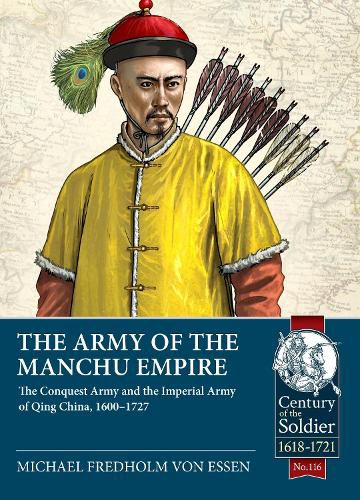Army of the Manchu Empire
Michael Fredholm Von Essen

Army of the Manchu Empire
Michael Fredholm Von Essen
This book describes and analyses the Manchu, or Qing, army in all its aspects. The emphasis lays on the Qing army in the seventeenth and early eighteenth century, because this is the time when the Manchu military system developed its own characteristics and reached maturity. Furthermore, having achieved this and in the process conquered one of the largest empires ever gained, the Qing army changed but little before c. 1850, when the Taiping War marked the beginning of the end of the Qing empire, as well as changed the character of the Manchu military system. In its heyday, the Qing army achieved a number of significant victories. First, it conquered Ming China. The Qing consistently achieved victories against numerically superior Ming armies. The Qing military operated as combined arms armies, successfully combining the various strengths of cavalry, infantry, and artillery. The Qing army was for cultural and historical reasons particularly strong in cavalry, as could be expected from a power that had incorporated numerous Mongols in its ranks. On the strategic level, this intimate level of co-operation with steppe nomads and the deep understanding thereby achieved of steppe politics and political systems of nomad states enabled the Qing state to extend its borders further to the north and west than any previous sedentary ruler of China. In the tropical countries to the south of China, the Qing army experienced both victories and serious losses, especially to disease. In this they showed similarities with the various European armies of the time. The Portuguese colonial troops in southern China proved no obstacle to Qing conquests. Perhaps the clearest indication of the versatility of the Qing military system was its successful containment of the very active Russian expansion then underway. The two treaties of Nerchinsk in 1689 and Kyakhta in 1727 delimited the Manchu-Russian border exactly where the Manchus wanted it to be, and the border selected by the Manchus remained unchallenged until the second half of the nineteenth century. Indeed, the border delimited at that time forms the backbone of the national borders of the region to this day. In this book, Michael Fredholm von Essen presents new research on an army and military campaigns previously seldom described in English. He explains the development of the Manchu Conquest and Imperial Qing Armies and details the military system of Qing China, which until 1912 fought a variety of enemies ranging from Ming Chinese, Mongols, and Tibetans to Russians and Western Colonial armies. While numerous academic works in recent years have been published on all aspects of Manchu history, culture, and language, none deals exclusively with the Manchu military system and, when these works touch upon military affairs, they are often vague on detail and inconsistent. A comprehensive Manchu military history still remains to be written, but to do so it is first necessary to understand how the Manchu military operated in practice, as opposed to theory and scholarly wishful thinking. This book set out to do exactly this. 138 b/w illustrations, 77 b/w photos, 20 colour plates, 1 b/w map, 7 tables
This item is not currently in-stock. It can be ordered online and is expected to ship in approx 4 weeks
Our stock data is updated periodically, and availability may change throughout the day for in-demand items. Please call the relevant shop for the most current stock information. Prices are subject to change without notice.
Sign in or become a Readings Member to add this title to a wishlist.


